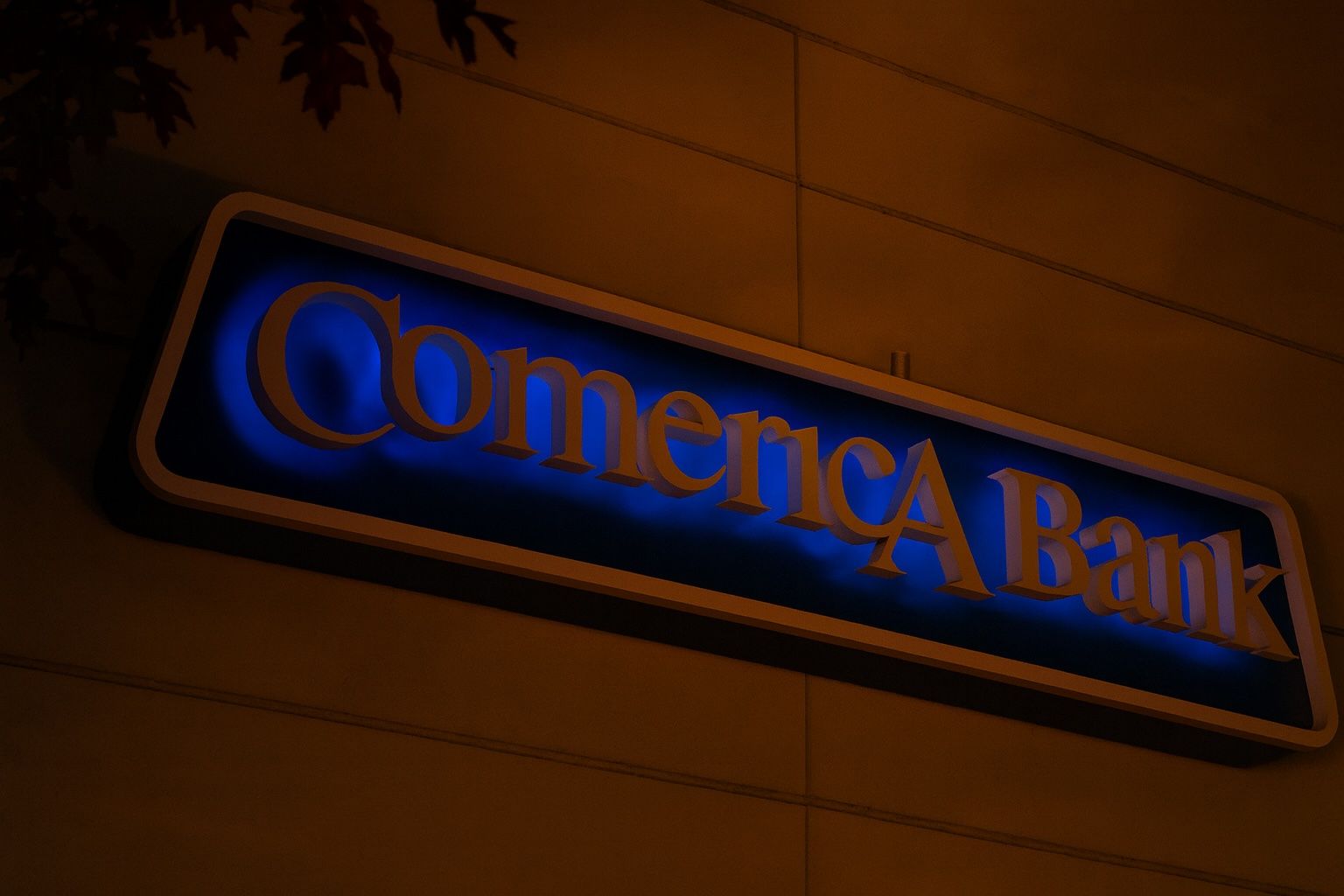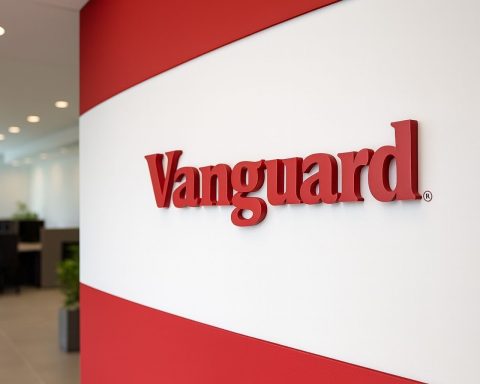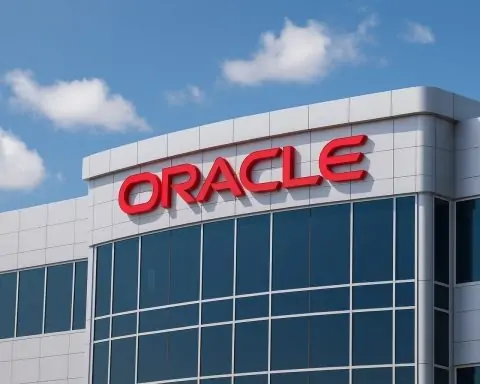- Blockbuster Bank Merger: Fifth Third Bancorp is acquiring Comerica Incorporated for $10.9 billion in an all-stock deal, creating the 9th-largest U.S. bank with roughly $288 billion in assets [1] [2]. This merger will give Fifth Third a robust presence across the Midwest and fast-growing Sun Belt markets.
- Terms & Premium: Comerica shareholders will receive 1.8663 Fifth Third shares for each share of Comerica, valuing Comerica at about $82.88 per share – roughly a 20% premium to its prior 10-day average price [3] [4]. Fifth Third’s investors will own ~73% of the combined company, and Comerica’s about 27% [5] [6]. The deal is expected to close by March 2026, pending shareholder and regulatory approvals [7].
- Major Expansion Strategy: The combined bank will operate in 17 of the 20 fastest-growing U.S. markets, including key states in the Southeast, Texas, Arizona and California [8]. Fifth Third plans an aggressive expansion – for example, 150 new branches in Texas by 2029 – to leverage Comerica’s footprint in booming regions [9] [10]. Executives say this merger “accelerates [Fifth Third’s] strategy to build density in high-growth markets” while deepening its commercial banking strength [11] [12].
- Market Reaction: Comerica’s stock price surged ~15% on the announcement (to around $80 per share), while Fifth Third’s stock dipped slightly [13] [14]. Investors welcomed the generous premium for Comerica and the prospects of a larger, more diversified bank. “This is officially the biggest thing we’ve ever done as a company, by any measure,” Fifth Third CEO Tim Spence said, underscoring the deal’s importance [15]. Analysts at Piper Sandler called the tie-up “basically, a game-changer” for the regional banking landscape [16].
- Wave of Bank Mergers: Experts say this deal is part of a wider consolidation trend among regional banks. Analysts expect a flurry of regional bank deals amid a friendlier regulatory climate [17] [18]. In fact, 2025 has already seen several big bank tie-ups – from Capital One’s $35 billion merger with Discover to PNC’s $4.1 billion acquisition of FirstBank – as mid-sized lenders seek scale [19] [20]. “Today’s announcement will likely encourage more boardroom discussions about possible tie-ups,” noted Argus Research analyst Stephen Biggar [21].
- Why Comerica Sold – Pressure & Synergy: Dallas-based Comerica had come under activist investor pressure to find a buyer after struggling with sluggish performance. In August, HoldCo Asset Management (a 1.8% shareholder) urged Comerica to pursue a sale, blasting its “disastrous decisions” and missteps [22]. Comerica’s CEO Curt Farmer acknowledged that, after the regional bank crisis of 2023, management had “been thinking more and more about the need for scale… [and] a bigger, granular retail deposit base” [23]. Fifth Third, with its strength in consumer and digital banking, complements Comerica’s commercial focus – “a natural fit,” as both CEOs put it [24] [25].
- Comerica Park Naming Rights:Comerica Park, the Detroit Tigers’ home ballpark since 2000, carries the Comerica name under a long-term sponsorship. With Comerica Bank being absorbed by Fifth Third, fans wondered if the stadium will be renamed. Both companies say the existing naming-rights deal (extended through 2034) remains in place [26]. “Comerica Park is a beloved landmark… While it’s too early to discuss any potential changes to facility names, we are committed to thoughtful decisions that reflect our shared values and community ties,” Comerica’s team said in a statement [27]. In short, no immediate name change is planned for the iconic ballpark, and Fifth Third/Comerica emphasize they’ll honor the park’s legacy in Detroit.
A $10.9 B Deal to Create a Top-10 Bank
Fifth Third Bancorp, based in Cincinnati, agreed to acquire Comerica Inc. of Dallas in an all-stock transaction valued at $10.9 billion [28]. The merger will form the nation’s ninth-largest bank by assets, a financial giant with approximately $288 billion in total assets and a deep footprint across multiple regions [29] [30]. Under the deal terms announced October 6, each Comerica share will be exchanged for 1.8663 shares of Fifth Third stock [31]. At Fifth Third’s pre-announcement share price, that equates to $82.88 per Comerica share, representing about a 20% premium over Comerica’s recent average trading price [32] [33].
When the deal closes (expected by the end of Q1 2026), Fifth Third’s shareholders will own roughly 73% of the combined company, with Comerica’s shareholders holding the remaining 27% [34]. The transaction requires approval from both companies’ shareholders and regulators, but executives express confidence in the strategic merits. “This combination marks a pivotal moment for Fifth Third,” said Fifth Third CEO Tim Spence, calling Comerica’s franchise “a crown jewel” that will significantly boost Fifth Third’s growth plans [35] [36]. Comerica CEO Curt Farmer likewise praised the merger, saying it “allows us to build on our leading commercial franchise… across more markets, while staying true to our core values” [37] [38].
By the numbers, the new Fifth Third-Comerica entity will be a formidable regional bank. It will command around $224 billion in deposits and $174 billion in loans [39], with a network spanning 48 states. This scale not only cracks the top-10 U.S. banks in size, but also positions Fifth Third to compete more effectively against the nation’s largest banks (JPMorgan Chase, Bank of America, Wells Fargo, etc.) [40]. “Following the acquisition, Fifth Third will rank among the top five banks in every major Midwest MSA,” noted TD Cowen analysts, referring to metropolitan market share [41]. In Michigan, for example, Fifth Third is expected to leap to the No.1 retail deposit share statewide after absorbing Comerica’s business [42]. Cincinnati-based Fifth Third has long been a powerhouse in Ohio and the Midwest; Comerica, founded in Detroit 174 years ago, brings strong relationships in Michigan and Texas. The merged bank’s dual heritage should bolster its presence from the Great Lakes to the Sun Belt.
Strategic Rationale: Growth Markets & Synergies
This merger is driven by a strategic imperative: growth and diversification. Both Fifth Third and Comerica were healthy but mid-sized institutions facing increasing competition and economic headwinds. By joining forces, they aim to create a more balanced and geographically diverse bank that can thrive in different market conditions. Fifth Third has traditionally been a Midwest retail banking leader (with strengths in consumer deposits, branch banking and digital services), while Comerica built a “middle market” commercial banking franchise focusing on business lending, treasury management, and wealth clients [43] [44]. The combination marries these strengths. “What you get here is a bank that’s going to be really beautifully balanced,” CEO Tim Spence said, noting Fifth Third coveted some of Comerica’s niches (like auto dealer financing and tech industry loans) to complement its own offerings [45] [46]. Conversely, Comerica will gain access to Fifth Third’s broader retail deposit base and fintech-savvy capabilities – a crucial advantage as banks seek stable low-cost funding [47] [48].
Expansion into fast-growing regions is a major prize of this deal. Fifth Third, despite its Midwestern name, has been methodically pushing into the Southeast and West in recent years. It opened its first branches in states like Alabama just this year [49], and has used data-driven methods (like heat-mapping) to identify attractive markets [50]. Comerica’s footprint gives an instant boost in several Sun Belt states. The combined bank will operate in 17 of the 20 fastest-growing U.S. metro areas, including booming locales in Texas, Arizona, California, and Florida [51]. Fifth Third executives highlighted Texas in particular: before, Fifth Third had only a handful of offices in Texas, whereas Comerica is deeply rooted there (having moved its HQ to Dallas in 2007). Now, Fifth Third plans to open 150 new branches in Texas by 2029, aiming to become a top-three player in Dallas, Houston and Austin within a few years [52] [53]. “Comerica’s strong middle market franchise and complementary footprint make this a natural fit,” Spence said, adding that Fifth Third can overlay its consumer products and digital tools onto Comerica’s network to unlock growth [54] [55]. By 2030, the bank expects over half its branches will be in the high-growth Southeast, Texas and Western markets – a dramatic shift from its Midwest-centric past [56] [57].
There are also significant financial synergies. Fifth Third projects the deal will be immediately accretive to its earnings and efficiency metrics [58]. The bank plans to cut about $850 million in costs (over one-third of Comerica’s non-interest expenses) by eliminating redundancies and optimizing operations [59]. These savings, along with revenue gains, are expected to boost Fifth Third’s earnings per share by roughly 9% by 2027 [60] [61]. Notably, Fifth Third also will restructure about $1.7 billion of Comerica’s securities portfolio (which carries unrealized losses due to high interest rates) – a move that should improve the combined balance sheet and add income over time [62]. Fifth Third has emphasized that the merger meets its strict deal criteria: it’s strategically sound, financially attractive, and positions the bank for sustainable growth [63] [64]. “Our disciplined approach to M&A is that anything we do must be strategic, make financial sense, and expand our reach – this combination checks every box,” Spence said [65].
On a conference call, Fifth Third execs even described Comerica as a “crown jewel” opportunity that they’re confident they can integrate smoothly [66] [67]. They pointed out that the two banks’ business lines have minimal overlap in geography and clientele, which should make consolidation easier. For example, branch closures may be limited because Comerica’s strongholds (Texas, Michigan, California) complement rather than duplicate Fifth Third’s (Ohio, Illinois, Florida). Spence noted only “limited redundancies” are expected in the combined franchise [68] [69]. In areas where they do overlap (like Michigan), the merger could actually add value: Fifth Third plans to introduce its advanced mobile app, fintech partnerships, and broader product suite to Comerica’s longtime customers, potentially winning more deposits and loans locally [70]. The two banks’ cultures also share a focus on community banking, which may ease integration. Comerica’s Curt Farmer will become Vice Chair of the new company and join Fifth Third’s board (upon his eventual retirement) [71] [72], ensuring continuity of leadership and client relationships. Several other Comerica executives and board members will also have roles at Fifth Third [73] [74]. All told, Fifth Third is framing this merger as a transformative leap forward that accelerates its national expansion while preserving the strengths of both institutions.
Activist Pressure, 2023 Banking Crisis & the Push to Merge
Comerica’s decision to sell did not come out of the blue. The bank had faced mounting shareholder pressure and industry challenges in the past year. In 2023, the failures of Silicon Valley Bank and other regionals sparked a broader regional banking crisis that hit mid-sized lenders hard [75] [76]. Depositors pulled funds and fled to “too-big-to-fail” banks, while rising interest rates eroded the value of banks’ bond portfolios. Comerica weathered that storm, but its stock lagged peers and profitability stumbled. Sensing an opportunity, an activist investor – HoldCo Asset Management – disclosed a 1.8% stake in Comerica in mid-2025 and publicly urged the bank to find a buyer [77] [78]. In a scathing letter, HoldCo accused the Dallas-based lender of “objectively poor performance” and cited blunders like losing a major federal contract [79]. (Notably, Comerica had been the longtime issuer of the U.S. Treasury’s Direct Express benefit cards, but it was dropped from that program after regulators found issues with fraud management; Fifth Third won that contract in 2025 [80] [81].)
With critics circling, Comerica’s board began seriously evaluating a sale over the past six months, according to CEO Curt Farmer [82]. Farmer says the bank’s leadership had internalized lessons from the 2023 turmoil: “Coming out of the regional bank crisis in spring 2023, [we thought] more and more about the need for scale, for a bigger, granular retail deposit base” [83]. In other words, Comerica recognized that remaining a smaller standalone bank carried risks, and that merging with a peer could fortify its financial foundation. (Farmer maintains that HoldCo’s activism did not directly force the deal, stating “external pressure did not factor into our decision” [84], but the timing aligns with the activist campaign.) Ultimately, Fifth Third emerged as a natural partner offering what Comerica needed – scale, a broader deposit franchise, and strong consumer banking – while valuing Comerica’s business highly. As one analyst put it, Comerica found a “white knight” in Fifth Third that could unlock value for shareholders and customers alike [85] [86].
Beyond this single deal, the broader banking industry is in a new merger cycle. 2023’s regional bank scare has proven a catalyst for consolidation. Dozens of mid-sized banks are reevaluating their strategies, knowing that larger rivals have competitive advantages in funding, technology, and regulatory costs. “Mergers and acquisitions have become crucial for regional lenders looking for a competitive edge in a highly saturated U.S. banking market,” Reuters noted [87]. Analysts say many smaller banks simply must bulk up or risk falling behind: “Consolidation is crucial for smaller lenders to compete with the nation’s largest banks,” as one expert observed, especially if regulatory conditions allow [88]. Under the current U.S. administration, bank regulators have indeed signaled a more accommodating stance on M&A. In recent months, regulators streamlined merger reviews, rolling back stricter scrutiny from the prior administration [89]. “The new rules reduce uncertainty and align with [President Trump’s] efforts to spur economic growth,” said Acting Comptroller of the Currency Rodney Hood, referring to updated guidelines that make it easier for deals to win approval [90]. Banking attorney James Stevens noted that oversight agencies “opened the doors” to larger mergers, prompting banks to pursue partners “sooner rather than later” [91].
As a result, 2024–2025 has seen a surge in bank merger announcements – a stark contrast to the lull in the late 2010s. Fifth Third–Comerica is the largest U.S. bank deal of 2025 so far [92], but it’s one of several noteworthy combinations. In April, regulators approved a blockbuster $35.3 billion merger of Capital One and Discover Financial Services [93], a union that would have seemed unlikely a few years ago. Over the summer, Synovus Financial and Pinnacle Bank unveiled plans for an $8.6 billion merger of Southeastern banks [94]. And just last month, PNC Financial agreed to buy Colorado’s FirstBank for $4.1 billion, expanding PNC’s footprint in the Rocky Mountain region [95]. Bank consolidation is touching all corners of the country, but especially Sun Belt markets – where population and economic growth are hottest, and banks are racing to capture deposits [96]. “Dealmaking has especially taken off in fast-growing areas like the Southeast, Texas, Arizona and California, where the fight for deposits has been heating up for years,” American Banker reported [97].
For Fifth Third, buying Comerica is a bold bid to keep pace in this evolving landscape. It’s the bank’s first major acquisition since 2019 [98], and clearly a cornerstone of its growth strategy this decade. “This is officially the biggest thing we’ve ever done… It is number one, two and three for us, in terms of focus,” CEO Tim Spence told American Banker in an interview, emphasizing that executing this merger will be the bank’s top priority [99]. Industry observers are optimistic that the deal will pass muster with regulators, given the combined bank’s size (still far below the trillion-dollar mega-banks) and the current pro-merger policy environment. If anything, some predict more regionals will follow suit. “A friendlier regulatory environment may help mint several new trillion‑dollar megabanks over the next decade,” said Michael Ashley Schulman of Running Point Capital, “figuratively making Wall Street even more competitive” [100]. In other words, today’s regional bank could become tomorrow’s national powerhouse via mergers – and Fifth Third appears determined to be among the winners of this shake-up.
Market and Analyst Reaction
Investors responded swiftly to the Fifth Third–Comerica news. Comerica’s stock (NYSE: CMA) soared as trading opened on Oct. 6, jumping about 15% to around $80–$81 per share – its highest level in roughly three years [101] [102]. Fifth Third’s shares (Nasdaq: FITB) initially dipped about 2%, then stabilized to close only slightly down for the day [103] [104]. The divergence isn’t unusual: Comerica shareholders are being paid a premium, so their stock shot up to reflect that value, while Fifth Third’s stock faced mild pressure as it issues new shares for the deal. Overall, Wall Street cheered the strategic rationale. The KBW Nasdaq Bank Index, a regional bank stock benchmark, ticked up on optimism that well-executed mergers can strengthen the sector [105]. Analysts pointed out that bank stocks have been relatively robust this year – the S&P 500 Bank index was up ~21% year-to-date, outpacing the broader market [106] – giving healthy banks like Fifth Third a strong “currency” (high-valued stock) to fund acquisitions [107].
Banking analysts from multiple firms lauded the Fifth Third–Comerica tie-up as a savvy move. Piper Sandler’s team called it “basically, a game-changer” that dramatically accelerates Fifth Third’s expansion into key markets [108]. TD Cowen’s banking analyst Steven Alexopoulos was equally upbeat, writing that “in terms of the financial impact, to us this transaction is a home run… one of the strongest we’ve seen in years.” The key question, he noted, is whether Fifth Third can successfully integrate Comerica and “unlock” the full value of Comerica’s franchise – and “our bias is toward the latter”, indicating confidence that it will [109] [110]. Analysts were especially positive about the complementary nature of the two banks. “The fit… is really complementary,” CEO Spence emphasized, noting that Comerica’s East Michigan business, for example, has a similar profile to Fifth Third’s but in markets where Fifth Third was underrepresented [111]. Fifth Third’s strength in consumer and digital banking could “improve growth in legacy CMA [Comerica],” as Baird’s analysts observed [112]. On the flip side, Comerica’s specialties (like commercial payments, wealth management, and specialized lending) give Fifth Third new avenues for revenue that are less dependent on interest rates [113] [114].
Market commentators also see the deal as validation of the sector’s direction. “Record bank stock prices have allowed for a greater currency to do deals,” noted Argus Research’s Stephen Biggar, meaning well-capitalized banks can use their stock to buy rivals at attractive terms [115]. Biggar added that Fifth Third’s announcement “will likely encourage more boardroom discussions about possible tie-ups” among banks of various sizes [116]. In other words, seeing Fifth Third make a splash may prompt other regional bank CEOs to pick up the phone and explore mergers while conditions are favorable. Not all analysts were without caveats – some pointed out execution risks, such as cultural integration and technology systems consolidation, which can trip up large bank mergers. Cost-cutting targets will need to be met without harming customer experience. Regulators will also scrutinize the deal’s impact on communities (branch closures, layoffs, etc.) in their approval process. However, the consensus view is that Fifth Third and Comerica make a strong pair with plenty of upside if they deliver on promised synergies [117]. Moody’s and other rating agencies have not signaled major concerns, given both banks’ solid capital and the deal’s stock (not cash) structure preserving Fifth Third’s capital ratios. All told, the market’s initial reaction – Comerica up, Fifth Third steady – reflects a belief that Comerica’s shareholders get a fair deal today, and Fifth Third’s shareholders get a bigger, stronger bank for the future.
Detroit’s Comerica Park: A Name in the Balance?
One unique aspect of this merger is its impact on Comerica’s legacy in Detroit. Comerica Bank was founded in Detroit in 1849 and was long headquartered there before relocating its HQ to Texas. Despite the move, Comerica maintained deep ties to the Motor City – most visibly through Comerica Park, the downtown Detroit ballpark that’s home to MLB’s Detroit Tigers. The bank bought the naming rights to the stadium when it opened in 2000, and “Comerica Park” has since become an iconic name for Detroit sports fans. With Comerica now set to be absorbed into Fifth Third (an Ohio-based bank with its own name recognition in the region), many have wondered: Will Comerica Park get a new name?
The short answer: not anytime soon, based on what the parties are saying. The Tigers’ current naming rights agreement with Comerica runs through 2034, after a five-year extension was added to the original 30-year deal (which would have expired in 2029) [118] [119]. That means the Comerica name is contractually locked in for nearly a decade more. Of course, contracts can sometimes be renegotiated or bought out, and Fifth Third might eventually prefer to see its own name on the stadium. (Fifth Third is no stranger to sports sponsorships – its name graces a minor league baseball park in Toledo and an arena in Cincinnati.) But for now, both the bank and the team are staying mum on any changes. When asked on merger day about the ballpark’s name, the Detroit Tigers declined to comment [120]. Comerica’s communications team, however, did respond with a thoughtful statement that suggests continuity, at least in the near term.
“Fifth Third and Comerica share a deep commitment to the communities we serve, including Detroit,” the bank’s statement read [121]. It praised Comerica Park as “a beloved landmark with a rich history” and noted the significance of the venue to fans and the city. “As we move forward with the merger, we remain focused on honoring the legacy of both institutions and continuing to support the places and partnerships that matter most to our customers and communities,” Comerica (soon to be part of Fifth Third) affirmed [122]. Crucially, the statement added: “While it’s too early to discuss any potential changes to facility names, we are committed to thoughtful decisions that reflect our shared values and long-standing community ties.” [123] In plain language, that means no immediate decision has been made about renaming Comerica Park. The emphasis on “honoring legacy” and “too early” implies that the Comerica name will stay on the stadium for the foreseeable future, and if any change ever comes, it would be handled with great care and community input.
Detroit fans can take some comfort in that stance. Comerica Park has been the Tigers’ home for 23 seasons and carries decades of memories – from All-Star games to World Series runs – under that moniker. A sudden name change would likely be unpopular locally. Moreover, Fifth Third may see value in keeping the Comerica name visible in Detroit as a goodwill gesture, especially since Comerica has been an important civic partner there. It’s worth noting that Comerica Bank still has a major presence in Michigan (over 190 branches statewide) and has been active in local charities and sports partnerships (it even sponsors a Little Caesars Arena concourse with the NHL Red Wings). Fifth Third, which also operates in Michigan, will inherit those relationships. The bank’s statement suggests it recognizes the need to tread carefully with branding changes that affect community landmarks.
For context, there is precedent in sports for stadium name changes after bank mergers, but often not immediately. When North Carolina’s BB&T Bank merged with SunTrust in 2019 to form Truist Financial, the Atlanta Braves’ SunTrust Park eventually was renamed Truist Park – but only after the merger closed and a thoughtful rebranding process (and that was a newly opened stadium). In Detroit’s case, Comerica Park’s naming rights still have years to go, giving Fifth Third plenty of time to decide whether to rebrand the venue down the road. In the meantime, Tigers fans heading to postseason games this week can rest assured they’re still going to Comerica Park, and the familiar signage isn’t changing in the middle of a playoff run [124].
Outlook: A New Midwestern Banking Powerhouse
If all goes as planned, Fifth Third’s acquisition of Comerica will close by spring 2026, ushering in a new Midwestern banking powerhouse with a coast-to-coast reach. The combined bank will be headquartered in Cincinnati (Fifth Third’s home), with major corporate and regional offices likely retained in Detroit and Dallas to manage those markets. Regulators will be examining the deal over the coming months, but early indications suggest approval is likely – especially given the current policy environment encouraging regional bank combinations [125] [126]. Both banks have promised to work closely with regulators and community groups to ensure a smooth integration. That includes plans for maintaining service in communities and meeting obligations under laws like the Community Reinvestment Act. Fifth Third’s CEO Tim Spence noted that merging now, while both banks are strong, actually reduces certain risks: for instance, Fifth Third won’t have to undergo a complex conversion of Comerica’s customer accounts as a separate effort, since they’ll integrate as part of the merger process [127].
For customers, major changes will unfold gradually. Comerica’s branches (spanning Michigan, Texas, California, Arizona, and elsewhere) will eventually be rebranded under the Fifth Third name. Account numbers, online banking systems, and ATMs will be integrated, likely by 2026–27. Fifth Third has a reputation for tech innovation in banking, so Comerica clients may see enhanced mobile apps or digital services in the future [128]. Conversely, Fifth Third’s customers might gain access to some of Comerica’s specialty offerings in business lending or wealth management. Both companies stress that until the deal closes, it’s business as usual for customers: existing accounts, cards, and services remain the same.
Employees of the two banks will be keenly watching integration plans. Some overlapping administrative roles could be consolidated to achieve cost savings (part of that $850 million efficiency target). However, Fifth Third has indicated that front-line roles like branch staff are in demand, not redundancy, as the bank continues to expand into new markets [129]. With Comerica’s significant presence in Detroit and Dallas, Fifth Third will likely keep regional headquarters in those cities. In fact, having a larger parent bank could open up new opportunities and investments in those markets. Fifth Third has been actively growing in metro Detroit for years; post-merger, it will unquestionably become one of Michigan’s most dominant banks, which could mean more lending capacity and community investment in the state. Comerica’s long tenure in Texas and California also gives Fifth Third a strong beachhead to grow in those competitive states.
As the dust settles, banking industry experts will be studying this merger as a barometer for others. A successful integration – where cost targets are met and the combined bank gains market share – would validate the strategy of regional bank consolidation. “The key is whether Fifth Third can, after many years, be the company to unlock the value of the Comerica franchise,” noted TD Cowen’s Alexopoulos. His bet is yes [130]. If he’s right, we may see even more regionals pairing up, and possibly the emergence of a new tier of “super-regional” banks that rival Wall Street’s giants. For now, Fifth Third and Comerica’s union marks a milestone in U.S. banking – a bold gamble that bigger is better in the quest for growth, stability, and the ability to serve customers across a wider geography. And in Detroit, while one era (the Comerica era) yields to another (the Fifth Third era), the merger is also a reminder that names on buildings may change, but the commitment to local communities remains a constant refrain from banks, new and old [131] [132].
Sources: Reuters [133] [134]; Fifth Third & Comerica Press Release [135] [136]; Reuters (M. Saini) [137] [138]; Tech Space 2.0 [139] [140]; ClickOnDetroit/AP [141] [142]; Banking Dive [143] [144]; American Banker [145] [146].
References
1. www.reuters.com, 2. ts2.tech, 3. www.reuters.com, 4. ts2.tech, 5. ir.53.com, 6. www.reuters.com, 7. www.reuters.com, 8. www.reuters.com, 9. www.bankingdive.com, 10. www.bankingdive.com, 11. www.reuters.com, 12. www.reuters.com, 13. www.reuters.com, 14. ts2.tech, 15. www.americanbanker.com, 16. www.bankingdive.com, 17. www.reuters.com, 18. www.reuters.com, 19. www.bankingdive.com, 20. www.clickondetroit.com, 21. www.reuters.com, 22. www.bankingdive.com, 23. www.americanbanker.com, 24. ir.53.com, 25. ir.53.com, 26. www.clickondetroit.com, 27. www.clickondetroit.com, 28. www.reuters.com, 29. www.reuters.com, 30. ts2.tech, 31. ir.53.com, 32. ir.53.com, 33. ts2.tech, 34. ir.53.com, 35. www.reuters.com, 36. www.reuters.com, 37. ir.53.com, 38. ir.53.com, 39. www.reuters.com, 40. www.reuters.com, 41. www.reuters.com, 42. www.bankingdive.com, 43. ir.53.com, 44. ir.53.com, 45. www.americanbanker.com, 46. www.americanbanker.com, 47. www.americanbanker.com, 48. www.americanbanker.com, 49. www.bankingdive.com, 50. www.bankingdive.com, 51. www.reuters.com, 52. www.bankingdive.com, 53. www.bankingdive.com, 54. ir.53.com, 55. www.reuters.com, 56. ir.53.com, 57. www.reuters.com, 58. ir.53.com, 59. www.americanbanker.com, 60. www.bankingdive.com, 61. www.americanbanker.com, 62. www.americanbanker.com, 63. ir.53.com, 64. ir.53.com, 65. ir.53.com, 66. www.reuters.com, 67. www.reuters.com, 68. www.americanbanker.com, 69. www.americanbanker.com, 70. www.bankingdive.com, 71. www.reuters.com, 72. ir.53.com, 73. www.reuters.com, 74. ir.53.com, 75. www.reuters.com, 76. www.americanbanker.com, 77. www.reuters.com, 78. www.reuters.com, 79. www.bankingdive.com, 80. www.americanbanker.com, 81. www.americanbanker.com, 82. www.americanbanker.com, 83. www.americanbanker.com, 84. www.americanbanker.com, 85. www.americanbanker.com, 86. www.americanbanker.com, 87. www.reuters.com, 88. www.reuters.com, 89. ts2.tech, 90. ts2.tech, 91. ts2.tech, 92. www.bankingdive.com, 93. www.bankingdive.com, 94. www.bankingdive.com, 95. www.clickondetroit.com, 96. www.americanbanker.com, 97. www.americanbanker.com, 98. www.americanbanker.com, 99. www.americanbanker.com, 100. www.bankingdive.com, 101. ts2.tech, 102. ts2.tech, 103. www.clickondetroit.com, 104. www.reuters.com, 105. ts2.tech, 106. www.reuters.com, 107. www.reuters.com, 108. www.bankingdive.com, 109. www.americanbanker.com, 110. www.americanbanker.com, 111. www.bankingdive.com, 112. www.reuters.com, 113. www.reuters.com, 114. www.americanbanker.com, 115. www.reuters.com, 116. www.reuters.com, 117. ts2.tech, 118. www.clickondetroit.com, 119. www.clickondetroit.com, 120. www.clickondetroit.com, 121. www.clickondetroit.com, 122. www.clickondetroit.com, 123. www.clickondetroit.com, 124. www.clickondetroit.com, 125. ts2.tech, 126. ts2.tech, 127. www.americanbanker.com, 128. www.bankingdive.com, 129. www.americanbanker.com, 130. www.americanbanker.com, 131. www.clickondetroit.com, 132. ir.53.com, 133. www.reuters.com, 134. www.reuters.com, 135. ir.53.com, 136. ir.53.com, 137. www.reuters.com, 138. www.reuters.com, 139. ts2.tech, 140. ts2.tech, 141. www.clickondetroit.com, 142. www.clickondetroit.com, 143. www.bankingdive.com, 144. www.bankingdive.com, 145. www.americanbanker.com, 146. www.americanbanker.com









